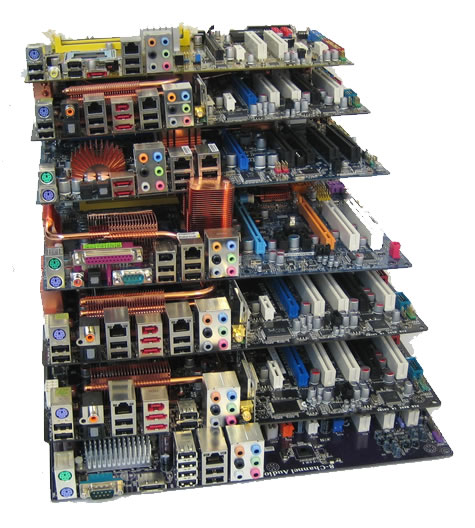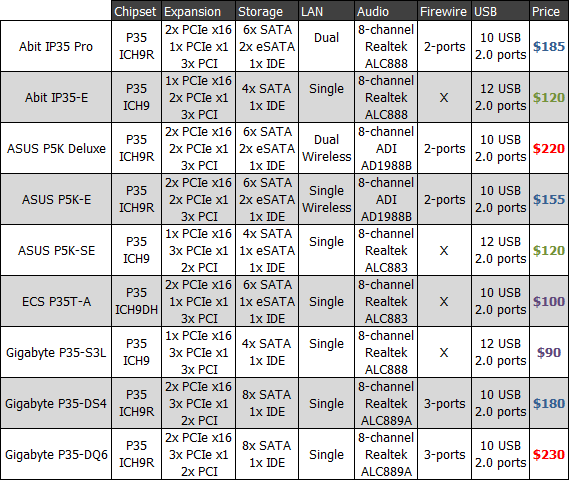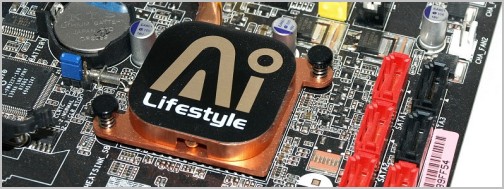For those that want it all, we have the ASUS P5K Deluxe featuring pretty much everything with the exception of the kitchen sink! Unfortunately these don't come cheap as ASUS are asking ~$220 for this motherboard making it 30% more expensive than Abit’s top dog. The extra $35 does buy you quite a lot more in the features department and should you need them the P5K Deluxe could be a very viable solution.

When it comes to networking you get dual Gigabit LAN but unlike the IP35 Pro one of the controllers is linked to the PCI Express bus. The P5K Deluxe is equipped with a Marvell 88E8056 and a Realtek RTL8110SC controller (this last one connected to the much slower PCI bus). However, for those that fail to get excited over wired solutions might want to pay attention to the wireless access point situated on this motherboard.
The ASUS WiFi-AP Solo feature allows users to create a complete wireless home network in either AP or wireless client mode. The motherboard has the capability of providing these functions even when the PC is in sleep mode, so users could potentially use Skype as a true replacement for traditional long distance telephone service. The P5K Deluxe comes bundled with an external omni-directional antenna that can sit up on top of the computer case.

The ASUS P5K Deluxe's storage capabilities mimic those from other high-end competing products. There are six SATA ports which are connected to the ICH9R southbridge chip. This means each port is capable of AHCI & RAID modes supporting RAID 0/1/5/10.

ASUS has also included the JMicron JMB363 controller for an additional two SATA ports used to support external hard drives. These eSATA ports can be found on the I/O panel, but please note ASUS has not included any eSATA cables in the package. The JMicron JMB363 controller uses a single PCI Express x1 lane and also offers support for two PATA devices via a single IDE port.
The P5K Deluxe supports a total of ten USB 2.0 ports, eight of which are accessible right out of the box leaving the other two for front panel USB ports found on most computer cases. The board also features support for two Firewire ports using an Agere FW322 1394a controller. While one of these Firewire ports can be found on a supplied expansion bracket, the other is conveniently placed on the I/O panel. This allows the P5K Deluxe to offer a broad range of connectivity much of which is accessible from the I/O panel.

Unlike the Abit boards which used high-end Realtek audio controllers this ASUS motherboard uses an ADI AD1988B audio solution. This is the most complete solution offered by ADI featuring 10 DACs/6 ADCs, 3 stereo headphone ports, peripheral sensing, jack retasking and microphone array capture, along with S/PDIF in and out. Completing the impressive list of features found on the P5K Deluxe is an 8-phase power design.









































